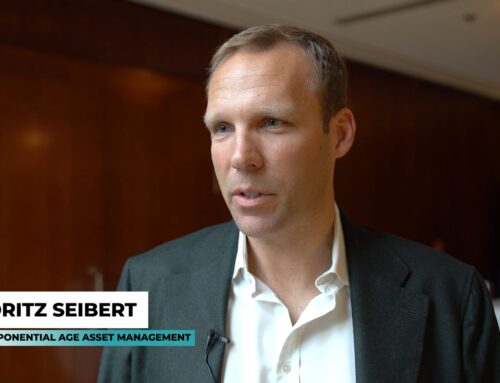Gregory Zuckerman’s book “The man who solved the market” ranks high among our favorite trading books (other books which we like and recommend can be found here).
George Coyle and I have collected what we believe are some of the most interesting passages and quotes from this book. Anyone who’s remotely interested in RenTec will find those valuable, and we’re happy to share them with you through this blog post, which we decided to split into two parts. This is part 1.
Subscribe here if you’d like to receive part 2 (soon) and stay up-to-date on all Two Quants publications.
Part 1
What follows are excerpts from Gregory Zuckerman’s book.
- His early research wasn’t especially original. Ax identified slight upward trends in a number of investments and tested if their average price over the previous ten, fifteen, twenty, or fifty days was predictive of future moves. It was similar to the work of other traders, often called trenders, who examine moving averages and jump on market trends, riding them until they peter out.
- The trove of data Simons and others had collected proved of little use, mostly because it was riddled with errors and faulty prices.
- No one had asked Straus to track down so much information. Opening and closing prices seemed sufficient to Simons and Ax.
- Simons made his own improvements to the evolving system, while insisting that the team work together and share credit.
- The firm began incorporating higher dimensional kernel regression approaches.
- For all the brainpower the team was employing, and the help they were receiving from Carmona and others, Axcom’s model usually focused on two simple and commonplace trading strategies. Sometimes, it chased prices, or bought various commodities that were moving higher or lower on the assumption that the trend would continue. Other times, the model wagered that a price move was petering out and would reverse—a reversion strategy.
- Simons needed new approaches to stay a step ahead of the pack.
- Axcom often held on to investments for weeks or even months at a time. That’s a dangerous approach, Berlekamp argued, because markets can be volatile. Infrequent trading precluded the firm from jumping on new opportunities as they arose and led to losses during extended downturns. Berlekamp urged Ax to look for smaller, short- term opportunities—get in and get out.
- As Ax became more disengaged, Axcom’s results deteriorated.
- He told Ax the only way he could prevent clients from bailing and keep the firm alive was to curtail their long- term trades, which were causing all their losses.
- Ax had resisted shifting to a more frequent, short-term trading strategy, partly because he worried brokerage commissions and other costs resulting from a fast-paced, higher-frequency approach would offset possible profits.
- Ax had also been concerned that rapid trading would push prices enough to cut into any gains, a cost called slippage, which Medallion couldn’t measure with any accuracy.
- Their goal remained the same: scrutinize historic price information to discover sequences that might repeat, under the assumption that investors will exhibit similar behavior in the future.
- Sifting through Straus’s data, Laufer discovered certain recurring trading sequences based on the day of the week.
- Simons and his researchers didn’t believe in spending much time proposing and testing their own intuitive trade ideas. They let the data point them to the anomalies signaling opportunity. They also didn’t think it made sense to worry about why these phenomena existed. All that mattered was that they happened frequently enough to include in their updated trading system, and that they could be tested to ensure they weren’t statistical flukes.
- They [signals] were so faint, the team took to calling them ghosts, yet they kept reappearing with enough frequency to be worthy additions to their mix of trade ideas.
- Their system became mostly short-term moves, with long- term trades representing about 10 percent of activity.
- Simons hadn’t spent much time delving into financial history, though. Had he done so, Simons might have realized that his approach wasn’t especially novel. For centuries, speculators had embraced various forms of pattern recognition, relying on methods that bore similarity to some of the things Renaissance was doing.
- As Renaissance staffers struggled to improve their model throughout the 1980s, they kept hearing about [Richard] Dennis’s successes.
- Bamberger provided analytical and technical support for Morgan Stanley’s stock traders, serving as an underappreciated cog in the investment bank’s machine.
- When the traders prepared to buy and sell big chunks of shares for clients, acquiring a few million dollars of Coca-Cola, for example, they protected themselves by selling an equal amount of something similar, like Pepsi, in what is commonly referred to as a pairs trade.
- Once the effect of their Coke stock selling wore off, the spread between the shares reverted to the norm, which made sense, since there had been no reason for Coke’s drop other than Morgan Stanley’s activity.
- Bamberger sensed opportunity. If the bank created a database tracking the historic prices of various paired stocks, it could profit simply by betting on the return of these price-spreads to their historic levels after block trades or other unusual activity.
- It wouldn’t be clear for many years, but Morgan Stanley had squandered some of the most lucrative trading strategies in the history of finance.
- Medallion would employ a single trading model rather than maintain various models for different investments and market conditions.
- Laufer understood that a single, stable model based on some core assumptions about how prices and markets behave would make it easier to add new investments later.
- To make it all easier to digest, they had broken the trading week into ten segments— five overnight sessions, when stocks traded in overseas markets, and five day sessions. In effect, they sliced the day in half, enabling the team to search for repeating patterns and sequences in the various segments. Then, they entered trades in the morning, at noon, and at the end of the day, eventually deciding five-minute bars were the ideal way to carve things.
- Laufer’s five-minute bars gave the team the ability to identify new trends, oddities, and other phenomena, or, in their parlance, nonrandom trading effects.
- One early discovery: Certain trading bands from Friday morning’s action had the uncanny ability to predict bands later that same afternoon,
- It wasn’t immediately obvious why some of the new trading signals worked, but as long as they had p-values, or probability values, under 0.01—meaning they appeared statistically significant, with a low probability of being statistical mirages—they were added to the system.
Stay safe and #happytrading.





